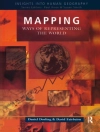Geo-information technology offers an opportunity to support disaster management: industrial accidents, road collisions, complex emergencies, earthquakes, fires, floods and similar catastrophes (for example the recent huge disaster with the Tsunami in South-East Asia on 26 December 2004). Access to needed information, facilitation of the interoperability of emergency services, and provision of high-quality care to the public are a number of the key requirements.
Such requirements pose significant challenges for data management, discovery, translation, integration, visualization and communication based on the semantics of the heterogeneous (geo-) information sources with differences in many aspects: scale/resolution, dimension (2D or 3D), classification and attribute schemes, temporal aspects (up-to-date-ness, history, predictions of the future), spatial reference system used, etc.
The book provides a broad overview of the (geo-information) technology, software, systems needed, used and to be developed for disaster management. The book provokes a wide discussion on systems and requirements for use of geo-information under time and stress constraints and unfamiliar situations, environments and circumstances.
Tabella dei contenuti
Plenary Contributions.- Oral Contributions.- Poster contributions.- Plenary Contributions.- Oral Contributions.- Poster contributions.- Plenary Contributions.- Oral Contributions.- Poster Contributions.- Plenary Contributions.- Oral Contributions.- Poster Contributions.- Plenary Contributions.- Oral Contributions.- Poster Contributions.- Plenary Contributions.- Oral Contributions.- Poster Contributions.












